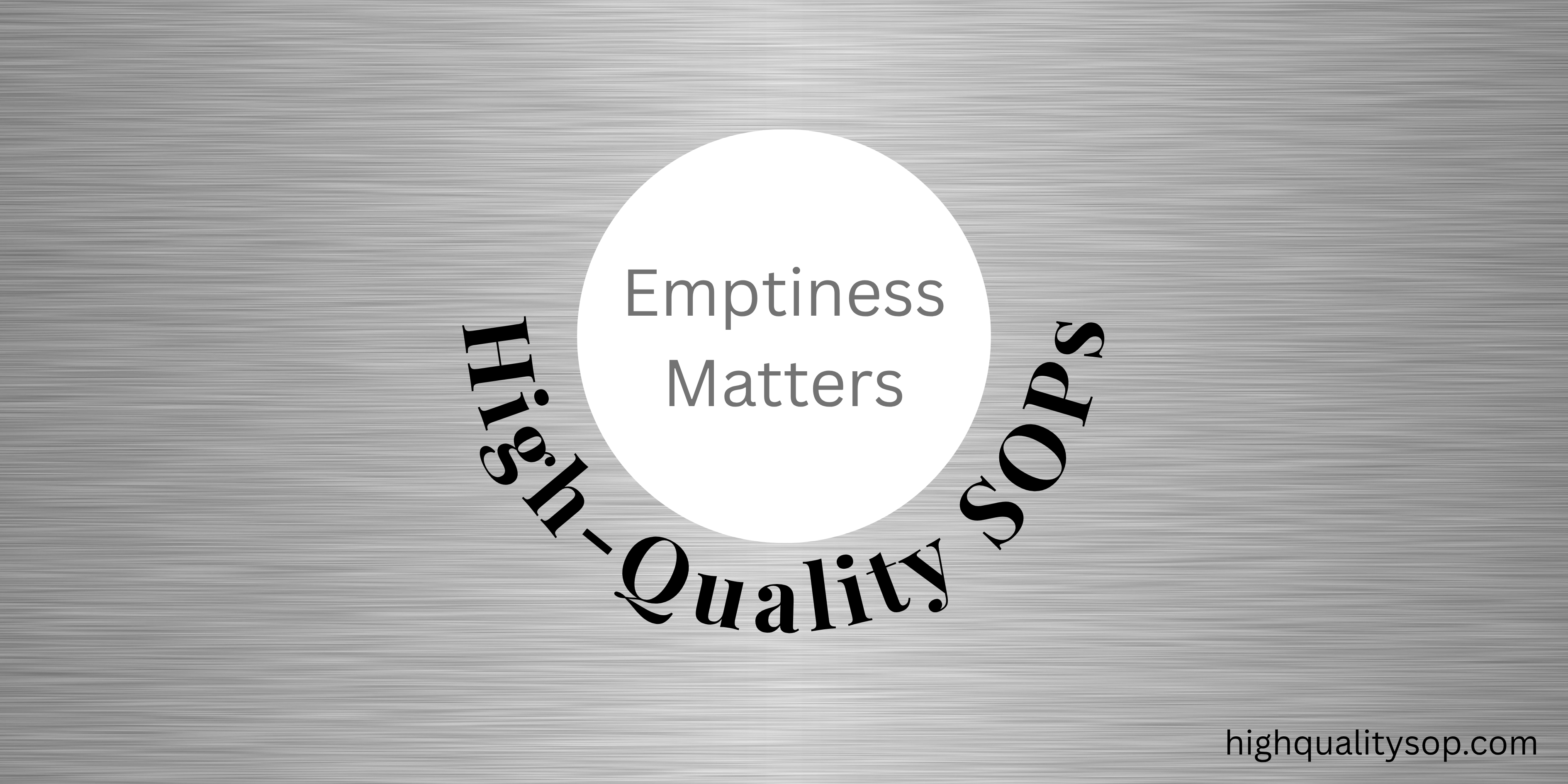High-Quality SOPs: Emptiness Matters

SOPs are often long, complex documents filled with text, diagrams, and flowcharts. But beyond their content lies an element that’s frequently ignored—one that can quietly deflate or subtly elevate the quality of an SOP.
Ignored or squeezed out, this invisible element can have a surprising effect on readability—and even compliance.
What is this underrated element?
White space—or the emptiness in SOP formatting.
Emptiness matters
White space refers to the blank areas between lines, around margins, between paragraphs, and surrounding visuals. It might seem trivial—but it isn’t.
Imagine walking into a store with narrow aisles, cluttered shelves, and barely enough room to move. Stressful, right? Now picture another store with wide aisles, clean lines, and ample breathing space. You can move. You can find things easily. You feel relaxed.
SOPs work the same way. Two documents can carry identical content. But one is jammed with text, tight margins, and cramped visuals. The other is spaced out, easy on the eyes, and visually inviting. Which one would you rather read—or follow instructions from?
White space helps users navigate a document without mental fatigue. It sets the tone before a single word is read. It signals quality. And it quietly supports compliance.
Pockets of white space
Creating a reader-friendly SOP begins with formatting decisions that open up white space. Focus on:
- Margins: At least 1 inch on all sides.
- Headings: Add decent space above and below.
- Line spacing: 1.2x within paragraphs enhances legibility.
- Paragraph spacing: Give visual breaks between successive paragraphs.
- Visuals: Leave enough room around tables, diagrams, and charts.
- Notes and warnings: Frame them with white space so they catch attention and don’t get buried.
Bottom line
For your content to stand out, it needs breathing space. Strive for a harmonious balance between content and emptiness. Because when it comes to SOP quality, formatting isn’t cosmetic—it’s foundational.
White space is to be regarded as an active element, not a passive background.
JAN TSCHICHOLD
